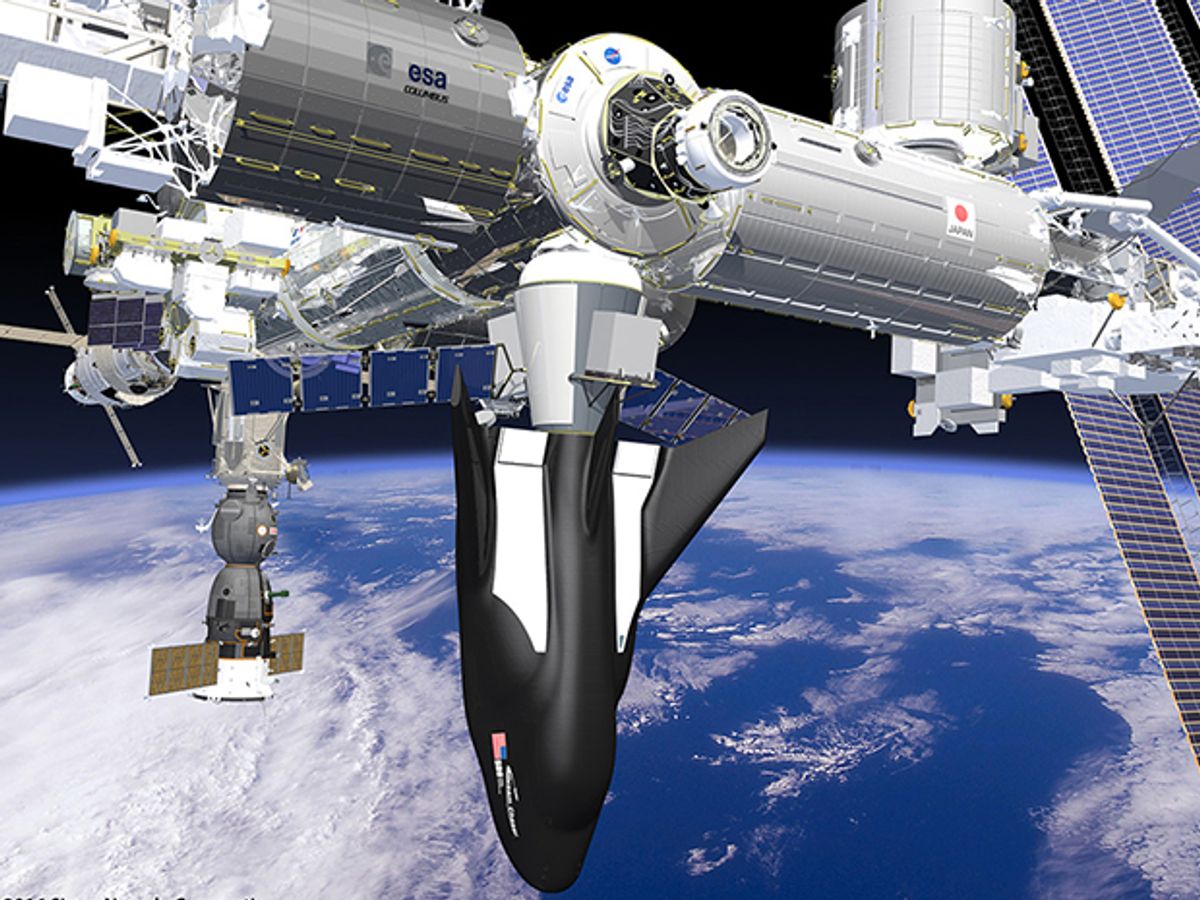A winged spacecraft that resembles a mini space shuttle will join the fleet of private rockets ferrying supplies to the International Space Station. NASA has announced that its new round of US $14 billion in commercial resupply contracts for the space station includes the Dream Chaser spacecraft made by the Sierra Nevada Corporation.
The Sierra Nevada Corporation (SNC) will share the $14 billion with SpaceX and Orbital ATK: the two private spaceflight firms that previously participated in NASA’s commercial resupply contracts. Both SpaceX and Orbital ATK use cargo craft that launch aboard rockets and return to Earth by splashing down in the ocean or burning up in the atmosphere, respectively. By comparison, SNC’s Dream Chaser launches aboard rockets but glides back to Earth and lands on a runway like the former NASA space shuttle.
“We plan to order services based on our current estimates of station needs, which provides NASA important flexibility to maximize the use of the space station,” said Kirk Shireman, the International Space Station (ISS) program manager at NASA’s Johnson Space Center in Houston.
The decision to boost the number of commercial providers of resupply runs from two to three “provides more options and reduces risk through a variety of launch options and mission types,” according to the NASA press release. NASA’s contracts guarantee a minimum of six cargo resupply missions from each of the three providers. The cargo flights are scheduled to begin in 2019 and go through 2024.
NASA’s statement about the need to reduce risk comes after SpaceX and Orbital ATK both suffered the loss of a cargo ship during resupply missions within the span of a year. During that time, a Russian Progress cargo spacecraft intended to resupply the space station was also lost. The addition of SNC’s Dream Chaser to the resupply roster would at least expand NASA’s options in a worst-case scenario.
The Dream Chaser spacecraft’s gentler return to Earth has added benefits, according to a Planetary Society blog post. During a 14 January press briefing, Julie Robinson, chief scientist for the ISS program, mentioned that the Dream Chaser’s ability to land on runways means scientists can access the results of space station experiments within hours. An experiment that returns aboard a SpaceX Dragon capsule that splashes down in the ocean might not be accessible for days.
It’s uncertain how much a Dream Chaser resupply mission might cost compared with a SpaceX or Orbital ATK mission. But SNC originally also bid unsuccessfully for a separate contract to ferry NASA astronauts to the space station and back with a different version of the Dream Chaser. SNC’s price in that case was $2.55 billion. By comparison, SpaceX’s winning bid for the crew transportation contract set a price of $1.75 billion. Boeing, another winner of that contract, had a price of $3.01 billion. (The commercial crew transportation missions begin in 2017.)
SNC may not have won its bid to fly astronauts to and from the space station in its mini shuttle. But the new resupply contract will at least help get the Dream Chaser off the ground and flying in service of the U.S. space program.
Jeremy Hsu has been working as a science and technology journalist in New York City since 2008. He has written on subjects as diverse as supercomputing and wearable electronics for IEEE Spectrum. When he’s not trying to wrap his head around the latest quantum computing news for Spectrum, he also contributes to a variety of publications such as Scientific American, Discover, Popular Science, and others. He is a graduate of New York University’s Science, Health & Environmental Reporting Program.



